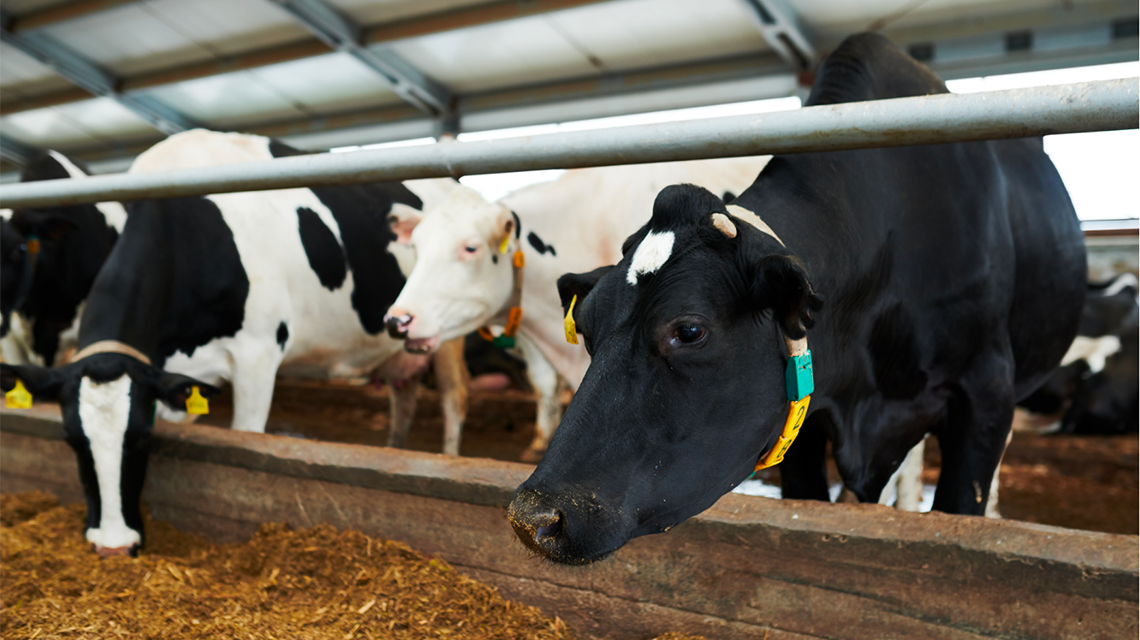Strengthening of the Italian Research Infrastructure for Metrology and Open Access Data in support to the Agrifood

Feed Additives in Animal Nutrition: The Crucial Role of Metrology
The importance of feed in modern animal husbandry cannot be underestimated, given its critical role in livestock health and productivity. It’s perhaps less known that feed often contains certain additives intended to improve quality, promote growth, support animal health by providing essential nutrients, enhance the digestibility of raw materials, or even prevent certain diseases.
Without additives, animals would need to eat more to meet their nutritional requirements, inevitably increasing feed costs due to higher consumption. Additionally, increased feed production would result in higher soil and water usage, contrary to current sustainability principles. However, precise measurement of these additives is essential because both deficiencies and excesses can have serious implications for animal health, food safety, and environmental sustainability.
The Recent Intervention of EFSA
On the topic of additives, Joana Firmino, Scientific Officer at EFSA (European Food Safety Authority) and an experienced biologist specializing in food and animal nutrition, shared insights in a recent interview published on EFSA’s website on September 18.
Dr. Firmino’s interview highlights various topics, including the method of additive production, the need to standardize proper dosing for safe animal and human nutrition, and the appropriate use of feed in general. The trend, she notes, leans towards using additives not to enhance the product but to minimize its use. For example, adding carotenoids to the feed of farmed salmon—who do not naturally consume crustaceans and small fish, their typical source of these pigments—to give their flesh the pink-orange hue expected by consumers is now common practice.

The Role of Metrology in Additive Analysis
In this context, as Andrea Mario Rossi, head of the Chemistry, Physics, and Nanotechnology program at INRiM and METROFOOD-IT liaison, explains, “Metrology—the science of measurement—plays a key role in regulating additive use in foods and feeds, as well as in monitoring them. Metrology ensures that the quantity of additives in animal feed (and food) is measured accurately, providing consistency and traceability in feed production. This is essential in a highly regulated sector where national and international standards must be met to protect animal health, prevent contamination, and ensure food safety for consumers.”
The precision required in measuring feed additives stems from the need to comply with strict regulatory frameworks established by authorities such as EFSA and similar bodies worldwide.
Specifically, the regulation on feed additives (EC Reg. No. 1831/2003) establishes a common authorization procedure and sets guidelines for market placement, labeling, and use. Additives can only be marketed after authorization, following a scientific evaluation demonstrating that the additive poses no risk to human health, animals, or the environment. These authorizations are valid for ten years and are recognized throughout the European Economic Area (EEA). The European Commission has also established the European Union Register of Feed Additives, a regularly updated database containing references to previously authorized additives. Metrology supports compliance by ensuring that each additive’s levels are within safety limits, minimizing risks to animals and humans.
What METROFOOD-IT Can Do:
The targeted use of increasingly effective and safe feed additives will be essential to provide today’s consumers and future generations with safe, high-quality animal-based food products, helping create sustainable food production systems.
With higher industry standards and growing consumer demand for healthy food products, producers are moving towards more sustainable, natural alternatives (such as barley, soy, yarrow seeds, milk thistle, mint, licorice roots) instead of synthetic, residual additives previously used. Special attention will be needed during synthesis, ensuring that feed safety is not compromised during the production process.
“In our country, the agri-food sector stands out for its quality, safety, innovation, and sustainability. In a world marked by a growing demand for healthy foods and a global interest in sustainable production, efficiency and reduced environmental impact must be prioritized to conserve natural resources.
Research has sought to meet these needs by providing new solutions to optimize animal nutrition, including feed additives that affect the characteristics of the feed itself, productivity, animal welfare, and health, as well as environmental impact,” explains Rossi.
In this context, METROFOOD-IT aims to act as a facilitator, supporting the sustainable development of the agro-industrial system. Through its laboratories and focus on metrological aspects, it can provide technical and scientific support, as well as the capability to develop and apply analytical methodologies for determining feed additives. Various analytical techniques can be applied, such as:
Chromatography (HPLC and GC): High-performance liquid chromatography (HPLC) and gas chromatography (GC) are widely used for analyzing vitamins, amino acids, and certain preservatives. These techniques provide highly accurate quantitative data, making them essential for ensuring correct additive levels.
Atomic Spectroscopy (ICP-AES, ICP-MS): Inductively coupled plasma atomic emission spectroscopy (ICP-AES) and inductively coupled plasma mass spectrometry (ICP-MS) are used to detect and quantify mineral additives such as calcium, phosphorus, and trace elements. These techniques are essential for evaluating mineral composition in feed.
Also applicable are:
Titration and pH Measurement: For some additives, particularly preservatives and acids, titration methods or pH measurements verify the additive concentration in the feed. This ensures the additive performs its intended function, such as extending shelf life or balancing feed acidity.
Microbiological Assays: When determining antibiotics and other growth promoters, microbiological assays are often used to ensure concentrations remain within acceptable limits. These tests help confirm that medicated additive levels are safe and effective.
It’s crucial to remember that, for analytical methodologies to be properly applicable under the regulatory requirements concerning feed additive measurements, the following must always be ensured:
Calibration: All instruments used in the measurement process must be regularly calibrated against certified international metrological standards to ensure accuracy.
Adequate Sampling Procedures: Accurate sampling is fundamental to ensuring that the sample tested represents the entire feed batch. Poor sampling methods can lead to inconsistent results, potentially masking the actual additive levels in the feed.
Data Traceability: Systems must allow complete data traceability, meaning the measurement process, from sampling to final analysis, must be documented and verified. This traceability is essential for regulatory compliance and addressing potential safety issues.





